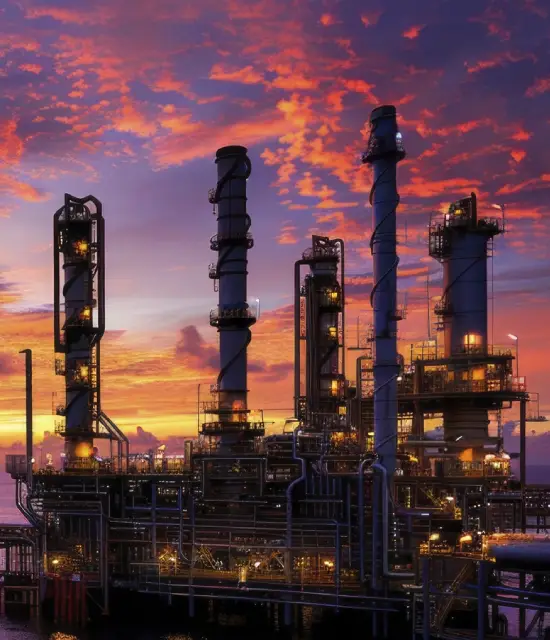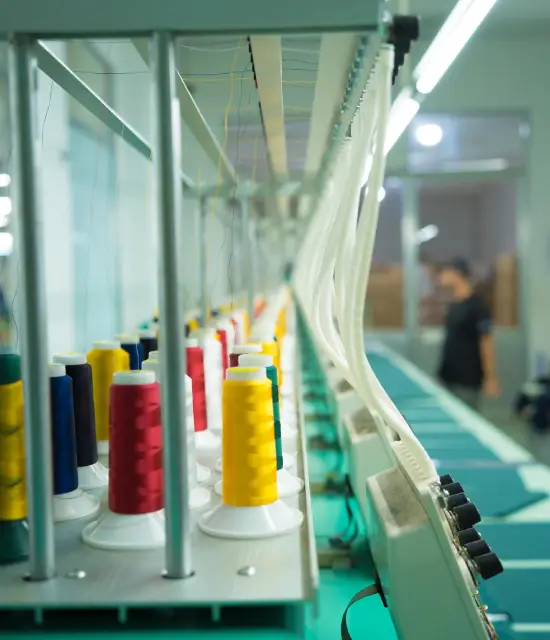about
Thermic fluid heat exchanger
A thermic fluid heat exchanger is advanced thermal transfer technology that is used to transfer heat efficiently between two fluid systems, where one is a high-capacity thermic fluid (also referred to as thermal oil). Their specific characteristics render them suitable for processes where temperature control is precise over a broad operating range. As a major thermic fluid heat exchanger manufacturer we design such systems to take advantage of the extraordinary thermal attributes of such specialized fluids. While water-based systems need to be pressurized at elevated temperatures, thermic fluids can exist in their liquid phase at temperatures of nearly 350°C without needing pressure vessels and possessing very good heat transfer properties.

Key Characteristics of
Thermic Fluid Heat Exchangers
Thermic Fluid
- As manufacturers of thermic fluid heat exchangers we offer specific thermal oils that are designed to be stable at high temperatures (usually 200°C to 400°C) without vaporization, unlike the water-based system. As the prominent manufacturers of thermic fluid heat exchangers we formulate the media as synthetic oils, mineral oils, or water-glycol blends for lower temperature applications, each offering specific performance advantages.
Design
- Types: Thermic fluid heat exchangers are available in several configurations as per the requirement such as shell and tube, plate, and coil designs, with the choice based on certain process requirements and space limitations.
- Construction: These carefully engineered thermal systems utilize materials specifically designed to be resistant to extreme temperatures and pressures as well as corrosion, for long-term reliability within harsh industrial conditions.
Efficiency Considerations
- Temperature Control: Advanced control systems track and keep accurate fluid temperatures, avoiding overheat that may harm the thermal oil and process materials.
- flow Management: With efficient design it helps maintains appropriate fluid flow within the system, avoiding hot spots and providing uniform thermal performance.
- Heat Recovery: Innovative thermic fluid heat exchanger are designed to accomodate waste heat recovery capabilities, greatly enhancing overall energy efficiency and lowering operating expenses. Read More
Working Principle
- The thermic fluid is continually pumped through the system, taking either heat away from a principal source (i.e., dedicated heater or furnace) or moving its thermal content to process fluids where precise control of temperature is necessary.
- The secondary process fluid passes through distinct channels in the exchanger, providing the optimal conditions for effective heat transfer without mixing. This setup enables accurate temperature control while ensuring total separation between the thermal oil and process media. Read More
Advantages of TAE Brand
Thermic Fluid Heat Exchangers
High Temperature Capacity
Capable of operating at higher temperatures compared to water or steam, which expands the range of applications.
Efficient Heat Transfer
Provides efficient heat transfer, resulting in improved energy utilization.
Reduced Risk of Boiling
Unlike water-based systems, thermic fluids do not vaporize at high temperatures, reducing the risk of pressure buildup and potential safety hazards.
Lower Operating Pressure
Typically operates at lower pressures compared to steam systems, enhancing safety and reducing the need for high-pressure equipment.
APPLICATION OF TAE THERMIC FLUID HEAT EXCHANGERS

Chemical Processing

Oil and Gas Industry

Food and Beverage

Pharmaceuticals
